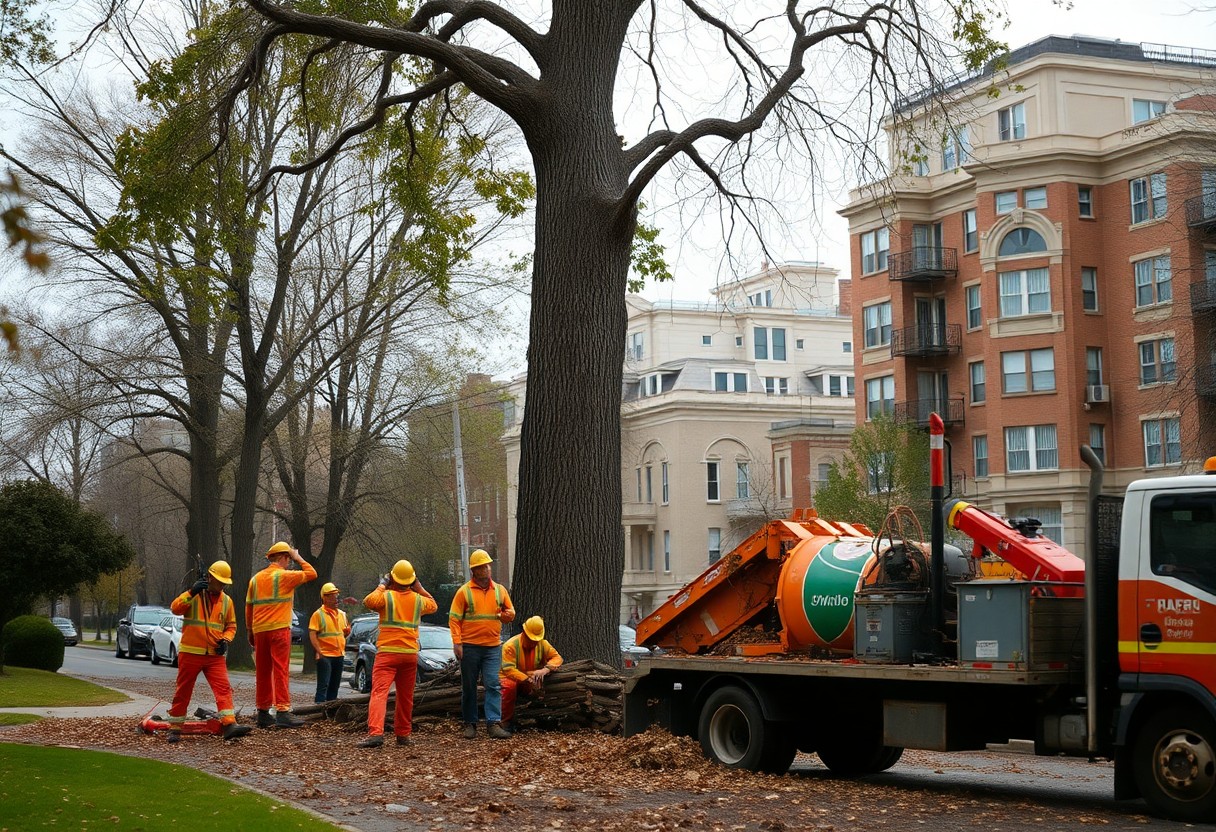Overlooking proper insurance coverage for your woodworking business can put your entire operation at risk. As a woodworker, you face unique challenges and potential hazards that standard business insurance might not adequately cover.
Your specialized equipment, workshop space, and the nature of your craft require specific protection tailored to the woodworking industry.
Whether you’re a solo artisan or manage a small team, understanding your insurance options will help you safeguard your business against accidents, property damage, and liability claims.
Types of Insurance Coverage
To protect your woodworking business effectively, you need several types of insurance coverage that work together.
Your woodworking operation faces unique risks that require specific protection measures. This comprehensive approach ensures you’re covered from multiple angles.
| Coverage Type | Protects Against |
|---|---|
| General Liability | Third-party injuries and property damage |
| Professional Liability | Design and consultation errors |
| Property Insurance | Tools, equipment, and workshop damage |
| Workers’ Compensation | Employee injuries and illnesses |
| Product Liability | Claims related to finished products |
General Liability Insurance
Liability insurance forms the foundation of your woodworking business protection. You’ll be covered against claims involving customer injuries in your workshop, damage to client property during installation, or accidents during deliveries.
Your policy typically includes coverage for medical expenses, legal defense costs, and settlement payments.
Professional Liability Insurance
On the consulting and design side of your woodworking business, professional liability insurance protects you against claims of errors, omissions, or negligence in your professional services.
This coverage becomes crucial when you provide custom design solutions or consultation services to clients.
Insurance for professional liability extends beyond basic coverage by protecting your business against financial losses from project delays, design miscalculations, or failure to meet client specifications.
You’ll have protection for legal expenses, settlements, and judgments related to professional mistakes or oversights in your woodworking consultations.

Workshop Protection
While your woodworking passion drives your business, protecting your workshop should be a top priority. A comprehensive insurance plan safeguards your workspace against fire, theft, natural disasters, and other unexpected events that could disrupt your operations.
Property Insurance
Any woodworking business needs proper property insurance to protect your workshop building, whether you own or lease the space.
This coverage helps you recover from structural damage, ensuring you can get back to work quickly after an incident.
Equipment Coverage
Insurance for your woodworking tools and machinery goes beyond basic property coverage. You need specialized protection that accounts for the high value and specific risks associated with your professional equipment.
In fact, your equipment coverage should include protection for both stationary and portable tools, from table saws to hand-held sanders.
This insurance can cover repairs or replacement costs if your equipment is damaged, stolen, or destroyed. You’ll want to regularly update your coverage as you acquire new tools to ensure adequate protection for your growing collection.
Personal Safety Coverage
Unlike general liability insurance, personal safety coverage focuses on protecting you, the woodworker, rather than your business assets. As someone working with potentially dangerous tools and machinery, your well-being should be a top priority.
This coverage ensures you’re protected against personal injuries and health-related incidents that could impact your ability to work and earn income.
Health Insurance
Personal health insurance is crucial for woodworkers due to the physical nature of your work. Your policy should cover emergency room visits, regular check-ups, and potential workplace injuries.
Look for plans that include coverage for occupational therapy and specialized treatments, as these may become necessary if you experience work-related injuries.
Disability Insurance
Between short-term and long-term disability insurance, you need both to maintain financial stability if you’re unable to work.
Your coverage should account for both temporary injuries and permanent disabilities that could affect your woodworking career.
Due to the physical demands and risks associated with woodworking, disability insurance becomes your financial safety net. Your policy should provide adequate monthly benefits to cover living expenses and maintain your lifestyle if you’re unable to work. Consider adding riders for specific woodworking-related injuries to enhance your coverage.
Business Operations Coverage
For your woodworking business, comprehensive operations coverage protects your daily activities and assets. This insurance safeguards your tools, equipment, inventory, and finished products against theft, damage, or loss.
You’ll also receive protection for your workshop space, whether owned or leased, ensuring your business can recover from unexpected events.
Business Interruption Insurance
Against unforeseen events that could halt your woodworking operations, business interruption insurance provides crucial financial support.
When disasters like fires, storms, or equipment breakdowns force your workshop to close temporarily, this coverage helps replace your lost income and covers ongoing expenses like rent and payroll while you get back on track.
Workers’ Compensation
Against workplace injuries and accidents, workers’ compensation insurance provides vital protection for your employees.
This coverage ensures your workers receive medical care and wage replacement if they’re injured while operating machinery, handling materials, or performing any work-related tasks in your woodworking shop.
Insurance requirements for workers’ compensation vary by state, but you’ll need this coverage if you have employees in your woodworking business.
Your premiums will depend on factors like your payroll size, claims history, and the specific risks associated with your woodworking operations. By maintaining proper coverage, you protect both your workers and your business from potential financial hardships.
Risk Assessment
Once again, conducting a thorough risk assessment of your woodworking operation forms the foundation of your insurance planning.
By evaluating your workshop’s specific risks, you can identify potential vulnerabilities and select appropriate coverage that aligns with your business needs.
This systematic approach helps you make informed decisions about insurance limits and policy types.
Common Workshop Hazards
Hazards in your woodworking shop include machinery accidents, fire risks from wood dust and chemicals, electrical issues, and repetitive strain injuries.
Your tools and equipment pose inherent risks, while storage of flammable materials and finishing products adds another layer of concern. Understanding these risks helps you prioritize safety measures and select appropriate insurance coverage.
Coverage Limits
With proper evaluation of your assets, equipment value, and potential liability exposures, you can determine appropriate coverage limits for your woodworking business.
Your policy limits should reflect the full replacement cost of your machinery, tools, and materials, while considering potential third-party claims and property damage.
Assessment of your coverage limits requires regular updates as your business grows and evolves. You should review your policy limits annually, factoring in new equipment purchases, expanded operations, and changes in your client base.
This ensures your coverage remains adequate to protect your woodworking business against potential losses.
Cost Factors
Not all woodworking insurance policies are priced equally. Your premium depends on factors such as:
- Workshop size and location
- Equipment value
- Annual revenue
- Number of employees
- Claims history
Though understanding these variables helps you negotiate better rates with insurers.
Premium Determinants
Across the woodworking industry, insurers evaluate your risk profile based on your safety protocols, experience level, and type of projects you undertake.
Your choice of safety equipment, workshop ventilation systems, and fire prevention measures can significantly impact your premium rates.
You’ll find that maintaining detailed records of your safety procedures often leads to more favorable pricing.
Deductible Options
Premium costs directly correlate with your chosen deductible amount. You can opt for higher deductibles to lower your monthly payments, but you’ll need to ensure you have sufficient funds available to cover potential claims. Your business size and financial stability should guide your deductible selection.
Further exploring deductible options, you’ll discover that most insurers offer flexible ranges from $500 to $5,000. When selecting your deductible, consider your workshop’s cash flow and risk tolerance.
Your choice impacts not only your monthly premium but also your out-of-pocket expenses during claims.
A balanced approach between affordable premiums and manageable deductibles will serve your woodworking business best.
Conclusion
As a reminder, your woodworking business needs comprehensive insurance protection tailored to your specific operations.
You’ll want to prioritize general liability coverage for third-party claims, workers’ compensation if you have employees, and property insurance to protect your valuable tools and equipment.
By selecting the right combination of coverage types and maintaining adequate policy limits, you can focus on your craft while knowing your business assets are properly protected.
Taking time to review and update your coverage annually ensures your woodworking enterprise remains secure as it grows.







